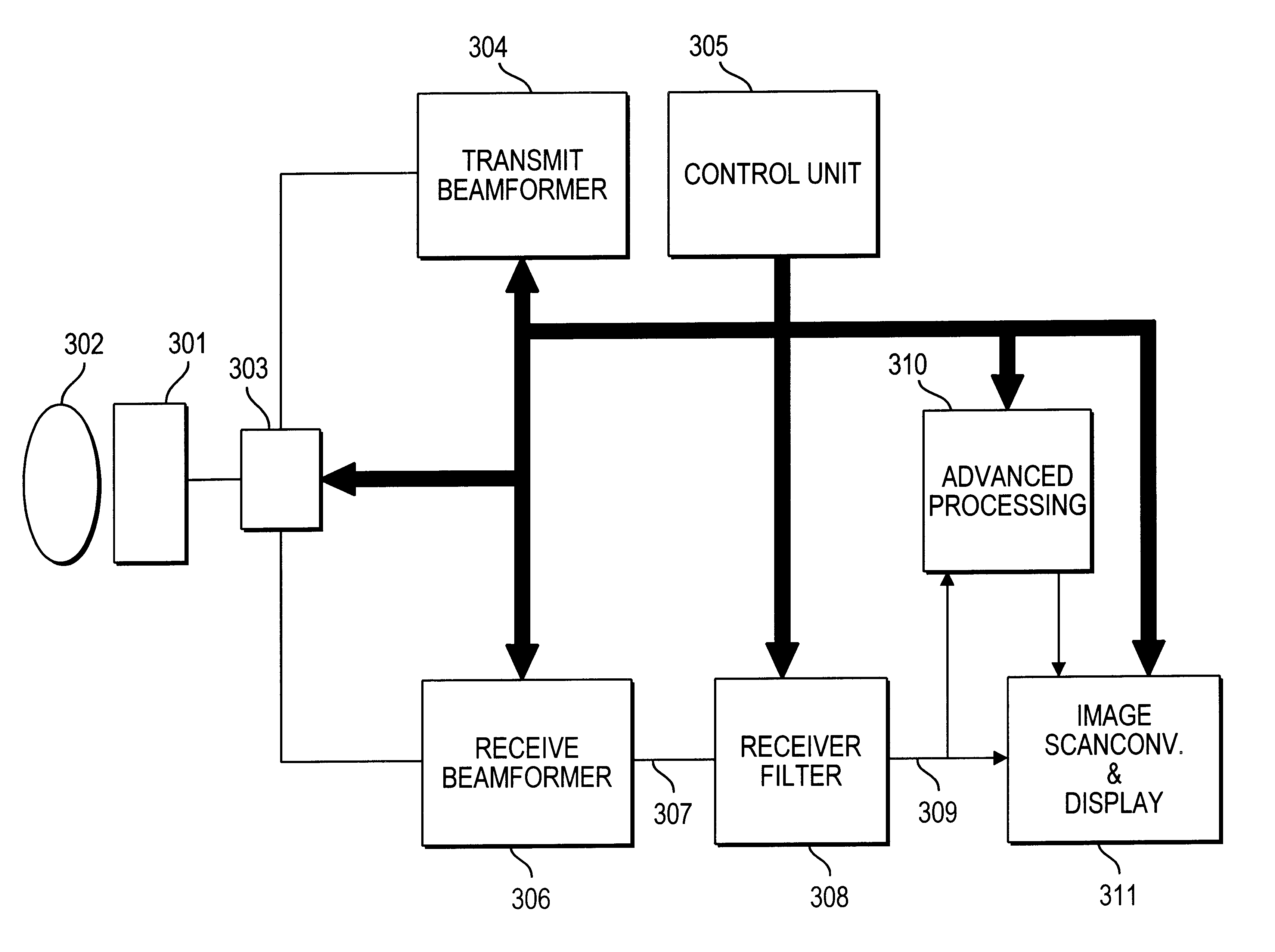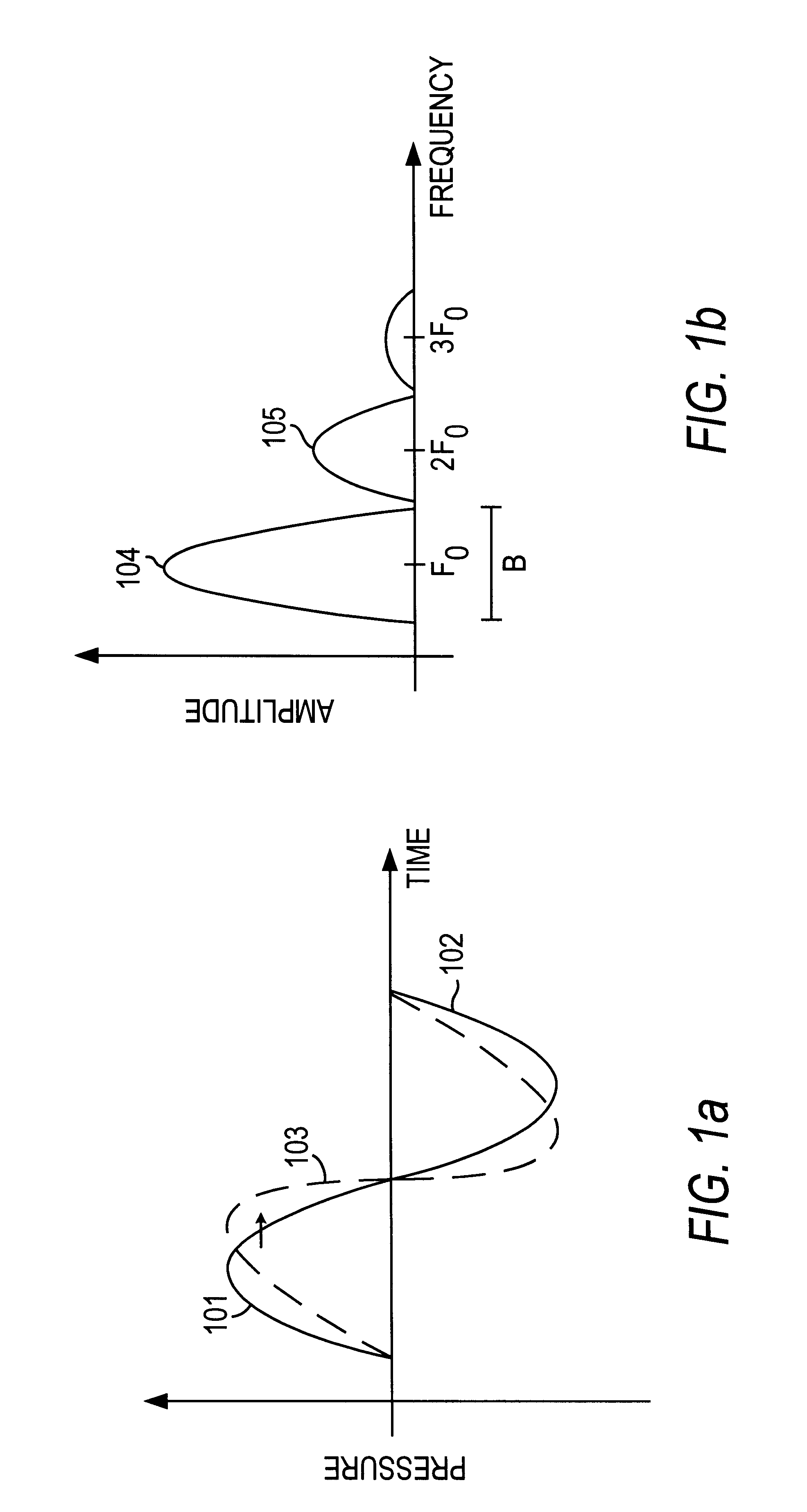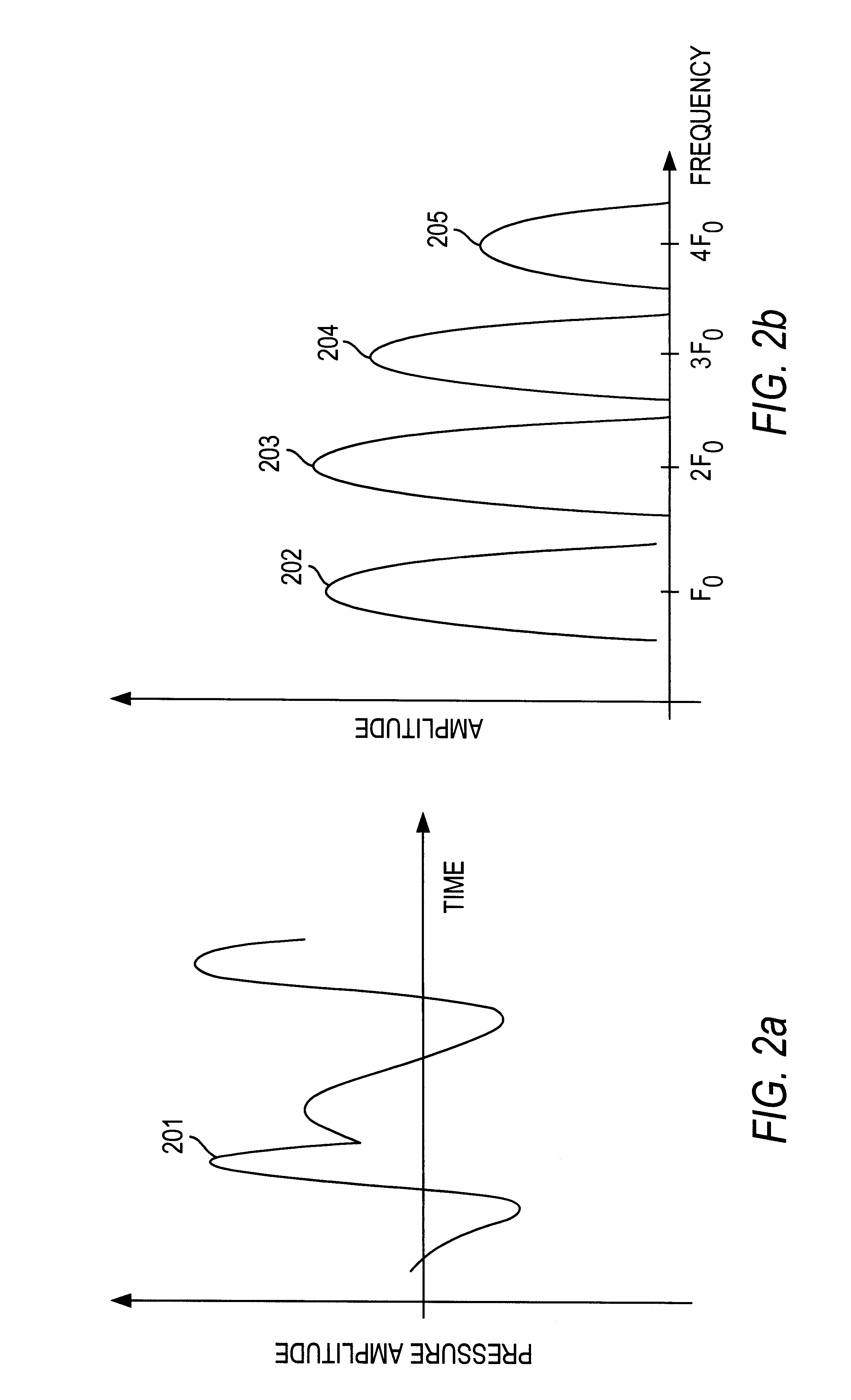Method of detecting ultrasound contrast agent in soft tissue, and quantitating blood perfusion through regions of tissue
a contrast agent and soft tissue technology, applied in the field of detecting an ultrasound contrast agent, can solve the problems of reducing the detection accuracy of low concentrations of agents, affecting the detection accuracy of ultrasound contrast agents,
- Summary
- Abstract
- Description
- Claims
- Application Information
AI Technical Summary
Problems solved by technology
Method used
Image
Examples
Embodiment Construction
The stiffness of a soft tissue increases when the tissue is compressed by the positive pressure in a transmitted ultrasound pulse. The propagation velocity of an ultrasound wave therefore increases with positive pressure due to this stiffness increase. Similarly, the propagation velocity decreases with negative pressure in the incident pulse. The positive pressure swing 101 of the initial transmitted ultrasound pressure pulse in FIG. 1a hence propagates faster than the negative swing 102. After a propagation distance, we therefore get a distortion of the pressure pulse, for example illustrated as the dotted curve 103. The distortion of the pulse increases with the propagation distance.
With no acoustic power absorption, the peak of the wave will eventually catch up with the trough, producing what is termed acoustic shock. However, the pulse distortion introduces higher harmonic frequency components in the pulse, with much larger absorption attenuation than the fundamental component. ...
PUM
 Login to View More
Login to View More Abstract
Description
Claims
Application Information
 Login to View More
Login to View More - R&D
- Intellectual Property
- Life Sciences
- Materials
- Tech Scout
- Unparalleled Data Quality
- Higher Quality Content
- 60% Fewer Hallucinations
Browse by: Latest US Patents, China's latest patents, Technical Efficacy Thesaurus, Application Domain, Technology Topic, Popular Technical Reports.
© 2025 PatSnap. All rights reserved.Legal|Privacy policy|Modern Slavery Act Transparency Statement|Sitemap|About US| Contact US: help@patsnap.com



